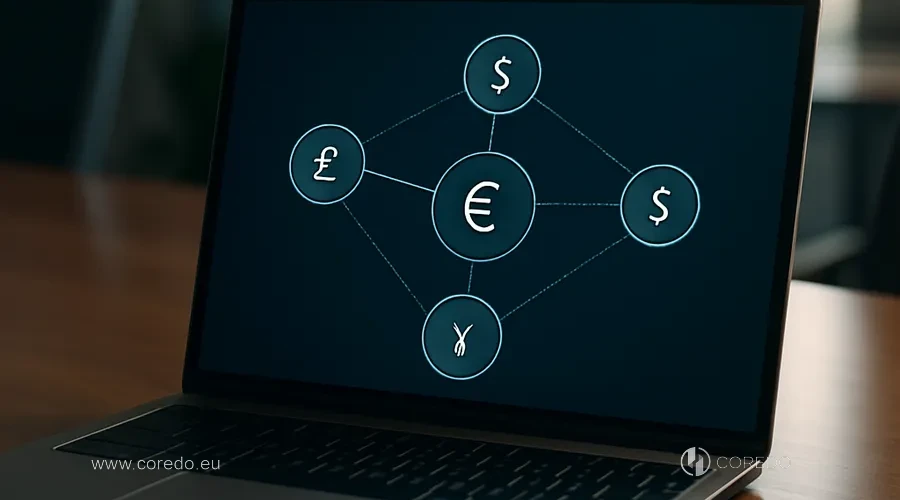Every third entrepreneur loses up to 12% of revenue due to inefficient payment processes and non-obvious fees. Why, despite technological development, do payment transparency and security still raise questions? How can you adapt to the new rules if cross-border operations are the foundation of your business in Europe, Asia or the CIS?
In 2025 the EU payment directive reaches a new level: PSD3 changes not only technical standards but the very philosophy of payment regulation. The new payment rules affect everyone: from fintech startups to large international holdings. At stake are access to EU payment systems, competitiveness and business security.
In this article I, Nikita Veremeev, CEO of COREDO, share a practical guide to implementing PSD3: from strategic changes to concrete steps for legal support and ROI optimization. If you want not just to meet the new requirements but to use PSD3 to scale and protect your business, I recommend reading the piece to the end. Here — only current solutions tested in practice by COREDO in the EU, Asia and the CIS.
What is PSD3 and why is it important for payments in the EU?

PSD3 does not merely update existing standards; it shapes a new ecosystem for all market participants: banks, non-bank PSPs, fintech companies and corporate clients.
The main objective of PSD3 is to ensure the security, transparency and innovation of EU payment services amid rapid digitalization. The directive strengthens EU payment regulation, closes the gaps of PSD2 and creates conditions for the emergence of new financial products, the integration of open banking services and effective fraud prevention.
This is especially true for companies operating in multiple jurisdictions, where the harmonization of rules is critical for scaling and optimizing payment processes.
Comparison of PSD2 and PSD3: key differences
| Aspect | PSD2 | PSD3 |
|---|---|---|
| Security | Implementation of SCA | Stricter SCA requirements, new authentication methods |
| Access for PSPs | Limited for non-bank PSPs | Equal access conditions for all PSPs |
| Fraud prevention | Initial measures | Expanded information sharing, improved monitoring |
| Fee transparency | Partial | Mandatory disclosure of terms and fees |
| Cross-border payments | Fragmented regulation | Harmonization and elimination of forum shopping |
| Innovation | Support for Open Banking | Expansion of digital innovations and API integrations |
Key changes of PSD3 in the payments sector

The main changes of PSD3 in the payments sector affect a wide range of issues, from enhancing payment security to strengthening user rights and introducing new technological standards. The new directive is designed to adapt regulation to the realities of the modern digital market and create a more competitive, transparent and protected environment for all participants in the payment ecosystem.
Payment security and Strong Customer Authentication (SCA)
PSD3 raises payment security standards to a new level. Strong customer authentication (SCA) now becomes mandatory not only for banks but for all payment service providers (PSPs), including non-bank organizations. New authentication methods include biometrics, digital identifiers and multi-factor solutions, which minimize the risks of fraud and unauthorized access.
Transparency of fees and payment terms
PSD3 requires mandatory disclosure of all fees, terms and risks to customers. This creates new transparency standards and protects consumer rights in payments. For companies, this means revising client offers, automating information disclosure and implementing new tools for monitoring fees.
New rules for PSP access to payment systems
One of the key changes: equal access conditions for all PSPs, including non-bank organizations. Whereas banks could previously restrict access to payment systems, PSD3 now enshrines the right to non-discriminatory access for all licensed providers.
This opens up new opportunities for fintech companies and promotes competition. A solution developed at COREDO for one non-bank PSP allowed it to increase its market share in the EU by 18% within 6 months by quickly entering new payment systems.
Information sharing on fraud between PSPs
PSD3 requires all market participants to share information about fraudulent operations and suspicious transactions. This creates a unified monitoring ecosystem and allows for prompt responses to new threats.
Transaction monitoring and fraud prevention
New standards for transaction monitoring and the automation of AML processes are among PSD3’s priorities. Implementing advanced transaction analysis systems, integrating with KYC and AML modules, and mandatory reporting of suspicious operations become an integral part of payment infrastructure.
Strong customer authentication under PSD3
PSD3 tightens SCA requirements by introducing new authentication methods: biometrics, one-time digital identifiers, integration with mobile devices and APIs for open banking. For businesses, this means the need to update IT infrastructure and review customer journeys.
I recommend starting SCA implementation with an audit of current processes and selecting solutions that comply not only with PSD3 but also with GDPR standards and national data protection laws. In COREDO projects we use multi-factor solutions that are easily scalable and integrate with existing systems.
Transparency and consumer rights in payments
PSD3 requires full disclosure of information about fees, timelines and risks of payment services. This increases trust and allows customers to make informed choices when selecting a provider. For companies, it is a call to automate disclosure processes and revise client offers.
Access of non-bank PSPs to payment systems
PSD3 removes barriers for non-bank PSPs by enshrining the right to equal access to EU payment systems. This changes business models and requires a revision of legal market entry strategies.
Thus, the implementation of PSD3 opens new opportunities for fintech development in the EU and creates the prerequisites for changing approaches to international settlements.
Impact of PSD3 on Cross-Border Payments

PSD3 harmonizes the rules for cross-border payments in the EU and eliminates the phenomenon of forum shopping — when companies choose the jurisdiction with the least stringent regulation. Now requirements for transparency, security and reporting become uniform across all EU countries, and also affect interaction with jurisdictions in Asia and Africa.
The regulatory changes in PSD3 2025 require companies to review their AML and KYC processes, implement automated transaction monitoring systems, and provide regular reporting on suspicious transactions.
In COREDO’s practice, support for the implementation of PSD3 in international structures includes:
- Legal audit and adaptation of internal policies to the new requirements.
- Integration of AML and KYC modules taking into account the specifics of each jurisdiction.
- Staff training and development of procedures for cross-border operations.
This is especially relevant for companies operating with multiple currencies and markets, where unified standards help minimize risks and improve the efficiency of payment processes.
How to prepare your business for PSD3?

The introduction of PSD3 opens a new chapter for the entire payments industry, requiring companies to rethink their approach to regulation and the security of financial services. To effectively prepare a business for PSD3, it is important to understand how these changes will affect processes, market participants’ roles, and the handling of customer data.
Impact of PSD3 on business and payments
The first step is a detailed audit of current payment processes, assessing compliance with the new PSD3 requirements and analyzing the business model for risks and opportunities.
PSD3 implementation and system integration
Implementing PSD3 requires not only technical changes but also a review of operational procedures, automation of reporting, and integration with external APIs (for example, for open banking).
COREDO’s experience shows that phased integration, starting with critical processes (SCA, AML, transaction monitoring), helps minimize risks and ensure business continuity.
Training staff on new requirements
Successful PSD3 implementation is impossible without regular staff training and the creation of a compliance culture. This includes training on new security standards, AML/KYC procedures, and handling customer data.
Legal support and PSD3 risks
Legal support for PSD3 implementation is a key factor in minimizing the risk of fines and reputational damage. It is important not only to properly document all internal policies but also to ensure their regular updating in line with changes in national and European legislation.
Evaluating ROI of PSD3 implementation and key metrics
Implementing PSD3 is an investment in security and competitiveness. To evaluate ROI, it is important to consider not only direct costs but also the reduction of operational risks, customer base growth, and increased market trust.
Key metrics: payment processing speed, reduction in the number of incidents, market share growth, reduced time for compliance procedures.
How to adapt your business to PSD3 requirements?
- Conduct an audit of payment processes and identify areas of non-compliance.
- Implement new SCA solutions and update the IT infrastructure.
- Automate disclosures and reporting.
- Integrate AML/KYC modules and train staff.
Next, we will consider the key aspects of legal support for PSD3 implementation in different regions.
Legal support for PSD3 in Europe, Asia and Africa
- Draft internal policies and procedures taking PSD3 and national laws into account.
- Ensure timely registration and Licensing of companies in new jurisdictions.
- Minimize legal risks through regular audits and documentation updates.
Scaling payments with PSD3
- Use new access opportunities to payment systems to expand the business.
- Optimize operational processes and automate compliance functions.
- Introduce innovative products based on open banking and digital identifiers.
Innovations and the Future of Payments with PSD3

PSD3 is becoming a driver of the digital transformation of payment systems and the financial sector. The integration of Open Banking, the development of digital identifiers, and the implementation of innovative customer authentication methods are opening new horizons for fintech startups and large companies.
PSD3 also contributes to the development of AML systems, the automation of transaction monitoring, and the creation of a unified ecosystem to combat fraud. This is especially important for companies operating at the intersection of multiple jurisdictions and currencies.
Conclusions and recommendations for entrepreneurs and executives
PSD3: this is not just another EU directive, but a fundamental transformation of the entire payments industry. For successful adaptation it is important to:
- Conduct an audit and modernize payment processes to meet the new requirements.
- Implement innovative solutions in the areas of SCA, AML and information disclosure.
- Ensure legal support at all stages of PSD3 implementation.
- Use new opportunities to scale the business and enter international markets.
- Assess the effectiveness of PSD3 implementation by ROI, risk reduction and increased customer trust.